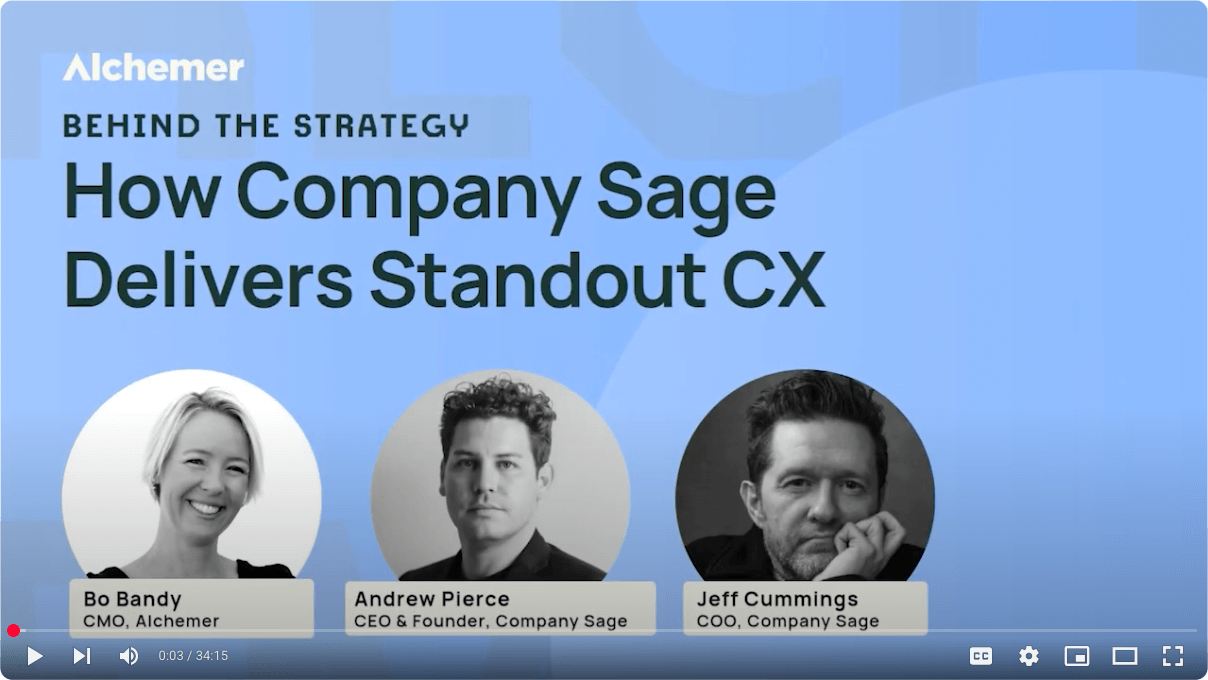Understanding customer experience (CX) isn’t just a strategy—it’s a superpower. Customer experience metrics illuminate the path to customer satisfaction, loyalty, and ultimately, success as an organization.
From the classics like NPS and CSAT to new innovative ways brands are measuring CX, each measurement offers a unique perspective on how well your organization currently meets customer expectations.
Join us as we explore the most effective CX metrics that businesses use to navigate their path to customer obsession.
Why should I track customer experience metrics?
Reduce customer churn rates
Customer experience metrics help in identifying and addressing the issues that are frustrating customers, thereby reducing churn rates. By understanding what drives customers away, organizations can take proactive action to improve customer experiences and product offerings.
Make better-informed business decisions
Data-driven insights from CX metrics enable teams to make informed decisions. Understanding your current customer experience helps prioritize the right things that matter to your customers. This applies to product development, marketing strategies, and customer service enhancements.
Identify trends and address issues before they escalate
Monitoring how changes impact customer satisfaction and loyalty allows organizations to identify emerging trends and potential issues before they escalate. This proactive approach enables timely interventions and prevents small issues from becoming larger ones.
The Classics: time-tested customer experience metrics
Net Promotor Score (NPS)
Introduced in the Harvard Business Review in 2003, Net Promoter Score (NPS) is a leading growth indicator across industries. You can benchmark this measure of customer loyalty across other players in your industry.
Brands should value loyalty because it directly correlates to customer lifetime value and drives growth through word of mouth. If your organization’s score is higher than those of your competitors, you will likely outperform the market. Additionally, efforts to improve your score will also improve your business performance. On average, every industry’s NPS leader outgrows their competition by more than double.
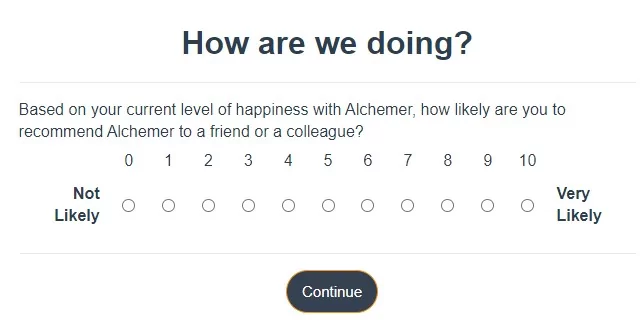
Respondents to an NPS question are grouped into three categories based on their ratings:
- Promoters (score 9-10): Loyal customers who will keep purchasing and will refer the business to others.
- Passives (score 7-8): Satisfied customers but they may be swayed by competitive offerings.
- Detractors (score 0-6): Unhappy customers who can damage your brand by negative word-of-mouth.
To complete the calculation, you then take your percentage of Promoters (9’s and 10’s) and subtract the percentage of Detractors (0’s through 6’s), leaving out the Passives (7’s and 8’s).
It is important to engage with all your customers, not just the Promoters and Detractors. Passives are at high risk of churn because they find some value but don’t care enough to speak up. This makes them vulnerable to switching to a competitor due to pricing, missing features, or poor customer experience.
While measuring NPS is important, NPS data is not always easily actionable. At Alchemer, we suggest adding an open text field after the NPS scale question. This allows respondents to provide qualitative feedback on why they gave that score.
Customer Satisfaction Survey (CSAT)
CSAT surveys are valuable as they enable the measurement of specific aspects of the customer experience. For instance, you can gauge satisfaction levels regarding customer service, initial software usage, or a payment process. These surveys provide a snapshot of a customer’s experience at a particular moment.
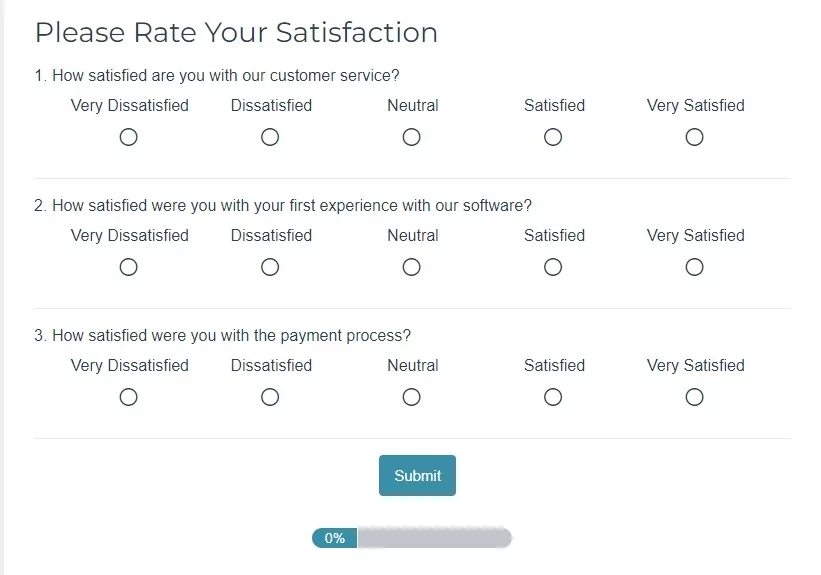
By consistently asking similar questions throughout a customer’s journey with your brand, you gain insights into how satisfaction levels evolve over time.
Customer Efforts Score (CES) Surveys
In a CES survey, you focus on the effort needed to resolve issues, not on satisfaction or recommendations. Instead, you focus solely on the effort required to resolve an issue or use your product or service. Like an NPS survey, a CES survey utilizes a Likert Scale. However, in this case, respondents rate their effort on a seven-point scale ranging from “Very Low Effort” to “Very High Effort.”
Convert CES survey responses into a percentage score. The primary objective is to minimize this score by prioritizing improvements in customer experience during issue resolution.
While NPS surveys excel at measuring customer loyalty, CES surveys are particularly effective for predicting consumer behavior.
System Usability Scale (SUS)
The System Usability Scale (SUS) provides a statistically valid and reliable method for assessing usability. A concept that is often elusive and challenging to define precisely.
Teams focused on customer satisfaction or experience with digital systems can derive significant benefits from implementing the SUS scale. However, SUS scores do not serve as diagnostic tools to pinpoint specific usability challenges within your system.
Instead, SUS gauges and monitors the overall ease of use of software applications. Moreover, its efficiency and cost-effectiveness make it particularly suitable for customer-centric teams operating with limited budgets.
Although it’s ten questions long, the SUS survey uses simple scale questions that are quick and easy for respondents to follow:
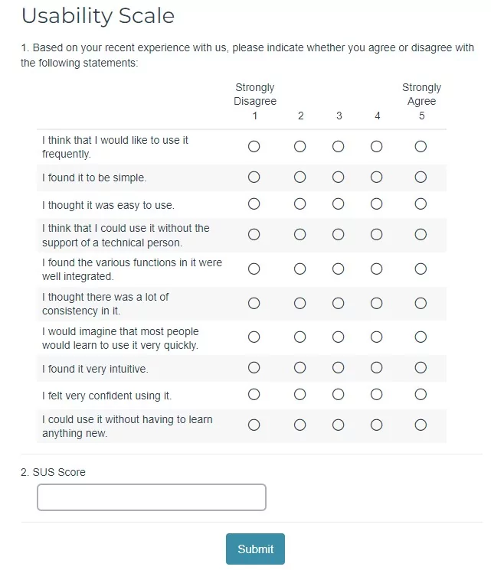
The New Guys: CX Metrics in a Digital World
NPS, CSAT, SUS, and CES surveys aren’t going anywhere. However, digital transformation has introduced new metrics tailored to digital user experiences and products.
CX Metrics for Digital Products
Digital products require metrics that reflect usability and user engagement specific to online platforms. Metrics such as App Store Ratings, User Engagement Rates, and Time on Site provide insights into user satisfaction, feature usability, and overall digital experience.
Customer Sentiment
Analyzing customer sentiment across digital channels—social media, review platforms, and directly in-app, offers real-time insights into public perception and sentiment trends. Sentiment analysis tools help gauge brand sentiment and identify emerging issues or opportunities for improvement.
At Alchemer, we recommend our customers who have apps, regularly prompt their mobile customers with the question “Do you love our [brand/app/company]?”. This question is a simple, powerful starting point for understanding customer sentiment throughout their lifetime.
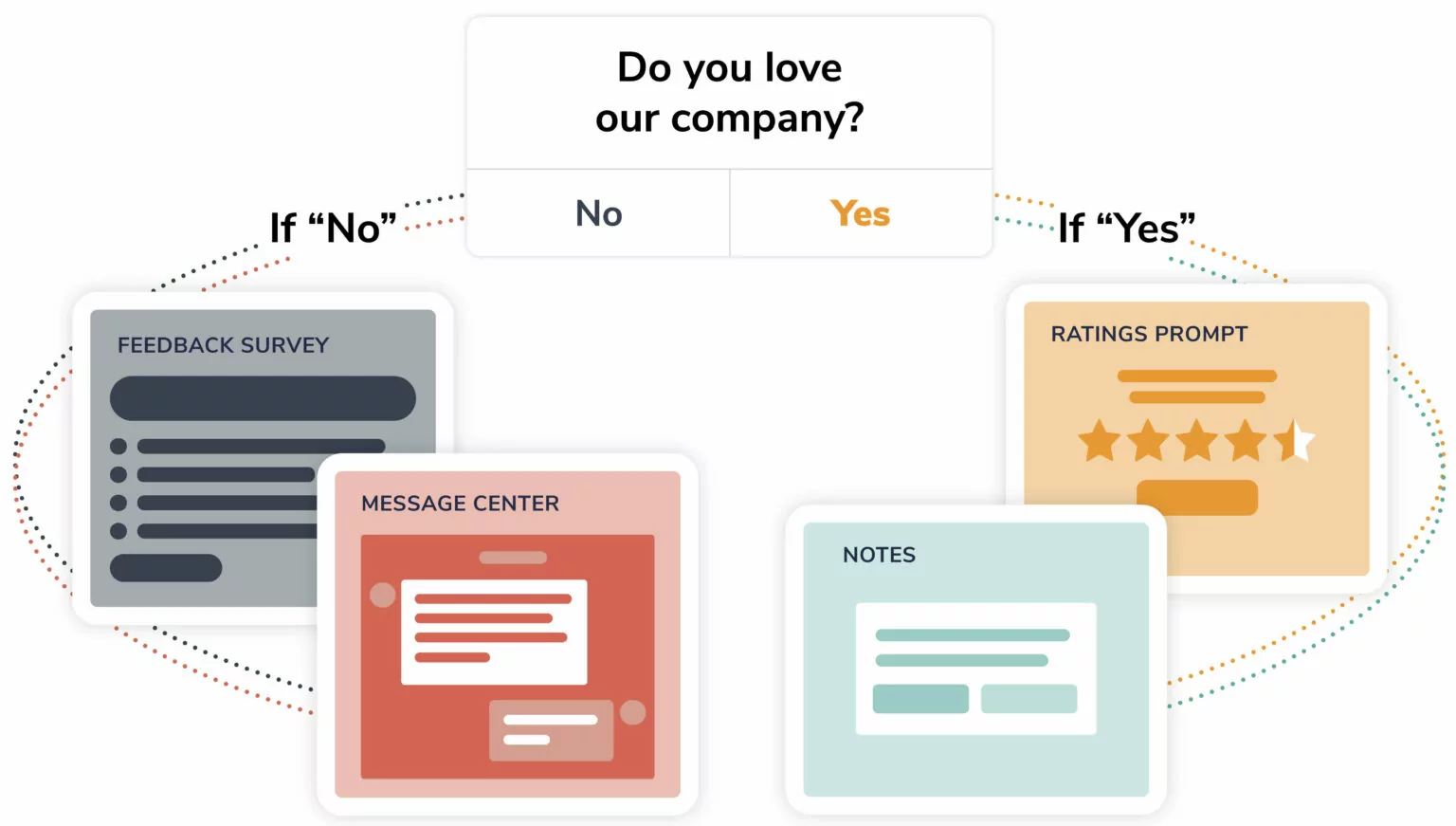
Love is an emotional stop word and makes your customers take a stance: are they a fan of your app, or are they at risk of not using it again? Based on their response, you can begin to build a feedback journey and with recurring prompts see how their sentiment changes over time.
If a customer says “No”, they don’t love your app, you have an opportunity to gain valuable feedback on how to turn the in-app experience into something they DO love. You can do this by asking for more feedback in a mobile survey.
Those that select “Yes” are perfect candidates to prompt to leave a review in the app store or ask to join your loyalty program.
Looking Ahead at the Future of CX Metrics
Artificial Intelligence (AI) has ushered in a new era for customer experience (CX) metrics, significantly enhancing how organizations understand and improve interactions with customers. Leveraging AI-powered sentiment analysis and predictive analytics allows businesses to extract actionable insights from large volumes of data. This process happens in real-time, enhancing decision-making.
Sentiment Analysis: AI-driven sentiment analysis goes beyond traditional metrics, offering nuanced understanding of customer emotions and opinions expressed in open-text feedback. This capability allows organizations to identify trends, monitor brand perception, and swiftly address emerging issues before they escalate.
Predictive Analytics: By analyzing historical data and customer behavior patterns, predictive analytics enable organizations to anticipate future trends, customer needs, and potential churn. This proactive approach allows businesses to tailor CX strategies and preemptively address customer concerns.
As organizations integrate AI into their CX strategies, they gain a competitive edge by fostering deeper customer relationships and driving sustainable growth.
If you are interested in learning more about adding AI-driven text analysis to your CX strategy, check out Alchemer Pulse! Alchemer Pulse is our AI solution for text analysis that is built for customer-obsessed teams that want to turn customer insight into business impact.



